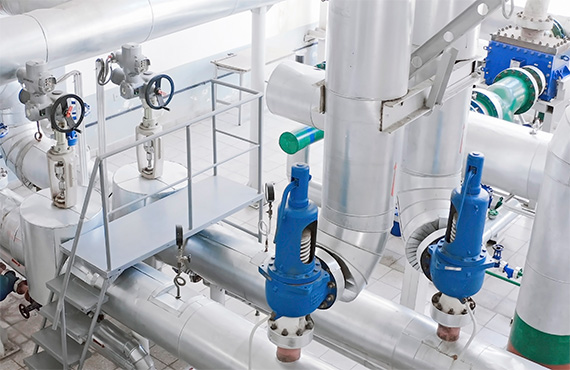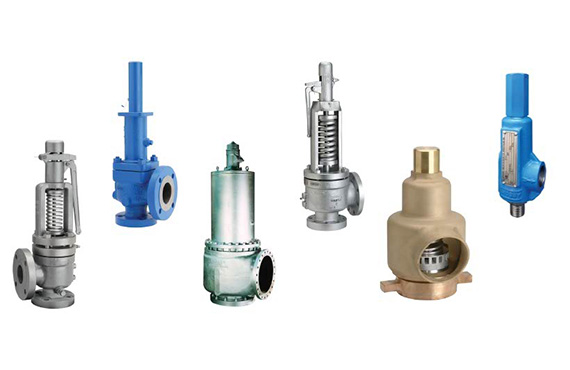
Safety is everything in your industrial plant. One rogue pressure spike can tear through equipment, grind production to a halt, or put your crew in danger.
That’s where safety valves step up, acting like silent sentinels to vent excess pressure and keep your steam or flow systems steady. Proconex, with 75+ years of hard-earned expertise, brings you top-shelf safety relief valves from leading brands like Emerson. Let’s break down what these valves do, why you can’t run without them, and how to pick the right valve types for your setup.
What Is a Safety Valve?
Think of a safety valve as a pressure watchdog. It’s a device that flips open to release extra pressure in things like boilers, pipelines, or reactors, stopping blowouts or breakdowns before they start. Unlike valves you turn by hand, pressure safety valves work solo, kicking in when pressure hits a set point and locking shut when things settle. In steam or flow systems, valve safety is your first line of defense. A piece in Valve Magazine says the right safety valves can cut overpressure mishaps by 40 percent.
Why Safety Valves Are Essential
Your plant’s steam or flow system wrestles with high pressures every day. Skip the safety valves, and a surge could wreck your equipmentd. The MarketsandMarkets report sees the safety valve market hitting $5.2 billion by 2030, fueled by the need for gear that doesn’t quit. Here’s why they’re a must:
- Stop Catastrophes: Safety relief valves snuff out overpressure risks, keeping your equipment and people safe.
- Keep Running: Good valves trim downtime by 30 percent, per Plant Engineering.
- Save Cash: Avoid repair hits in the thousands per incident, says Hydrocarbon Processing.
- Stay Clean: Meet ASME and API standards to sidestep fines, per the National Board.
Plants using Emerson’s Crosby valves, installed and maintained through Proconex, see fewer pressure-related headaches, matching industry trends for safer operations.

Types of Safety Valves
You’ve got to match your types of safety relief valves to the job. Here’s the lineup:
- Spring-Loaded Safety Valves: These pop open fast for sudden pressure jumps; think boilers or oil rigs. Emerson’s Crosby valves shine here.
- Pilot-Operated Safety Valves: They use system pressure for tight control; great for refineries. Anderson Greenwood leads the pack.
- Balanced Bellows Valves: Handle weird backpressure shifts; perfect for chemical plants.
- Thermal Relief Valves: Tackle pressure from heat expansion; common in liquid lines.
Pumps & Systems notes spring-loaded valves cover 50 percent of industrial uses because they react in a snap. Proconex points you to the right one.
How to Choose the Right Safety Valve
Picking a safety valve means knowing your system cold. Weigh these contributing factors:
- Pressure and Temp: Match the valve to your system’s max pressure and heat. Crosby valves take up to 3,000 psig.
- Fluid Type: Steam, gas, or liquid? Valve Magazine says pilot-operated valves rule for gases.
- Flow Rate: Get a valve that can handle your system’s flow without choking.
- Regulations: Stick to ASME Section VIII or API 526 to keep things legal.
A Control Global survey blames 45 percent of valve failures on bad sizing. Proconex’s team makes sure you get the sizes you need.
Proconex: Your Safety Valve Experts
Proconex, the Mid-Atlantic’s Emerson Impact Partner, has 75+ years of safety valve street cred. We stock a deep bench of safety valves—Crosby, Anderson Greenwood, and beyond—for industries like:
- Chemical
- Oil and gas
- Power
- Life sciences
- Refining
Our people don’t just sell; they dig in. Need a pressure safety valve for a reactor? We’ll spec it and set it up. Tangled in compliance and system validation knots? We’ll untie them. World Pumps pegs Emerson valves at 98 percent reliability; we bring that peace of mind to your plant. Plants with our Anderson Greenwood valves often spend less on maintenance, in line with industry patterns.
Conclusion
Safety valves are your plant’s dutiful overwatch, stopping pressure disasters and keeping things tight. From spring-loaded to pilot-operated, knowing types of valves lets you choose smart. Proconex mixes Emerson’s top-notch tech with our deep experience to deliver what you need. Want to lock in safety, save money, and keep your system humming? Explore our safety valves today!
People Also Ask
Safety, pressure-regulating, and backpressure valves manage pressure, with pressure safety valves tackling overpressure risks.
Valves control flow or pressure; safety valves auto-vent excess pressure to protect systems.
